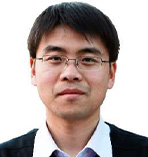
Tsinghua University
Dr. Ruitao Lv is a Professor at the School of Materials Science and Engineering, Tsinghua University. He received his Ph.D degree in 2009 from Tsinghua University. He has been a visiting researcher in Kyushu University (Japan) and a postdoctoral researcher in Penn State University (USA). He joined Tsinghua University as a faculty member since 2013. His research interests include the defect engineering of 2D layered materials and their applications in electrocatalysis, molecular sensing, optoelectronic devices, etc.
Defects are usually regarded as imperfections in materials that could significantly degrade their performance. However, at the nanoscale, defects (e.g. dopants, vacancies) can be exploited to generate novel and useful materials and devices. Therefore, defect engineering of 2D materials is becoming an important research line so far. In this contribution, I will summarize our progress on the defect engineering of low-dimensional materials, especially the controllable construction, atomic identification of lattice defects (dopants, vacancies, interfaces, etc.) and their high-performance/new-principle applications in diverse fields including ultrasensitive molecular detection, highly efficient electrocatalysis, electrical/thermal rectification, energy conversion/storage, etc. In particular, we achieved some exciting progress on the atomic scale visualization of defect configurations[1]. Much enhanced Raman scattering effect of 2D layered materials induced by lattice defects was unveiled for ultrasensitive molecular sensing [2, 3]. By engineering the defects in low-dimensional materials, highly efficient electrocatalysis for clean energy production were achieved [4-6]. More recently, we achieved electrical and thermal rectification simultaneously based on as-grown monolayer lateral heterojunction with zigzag interface for the first time [7]. The discovery provides the opportunity to develop more effective heat dissipation in highly integrated circuits.